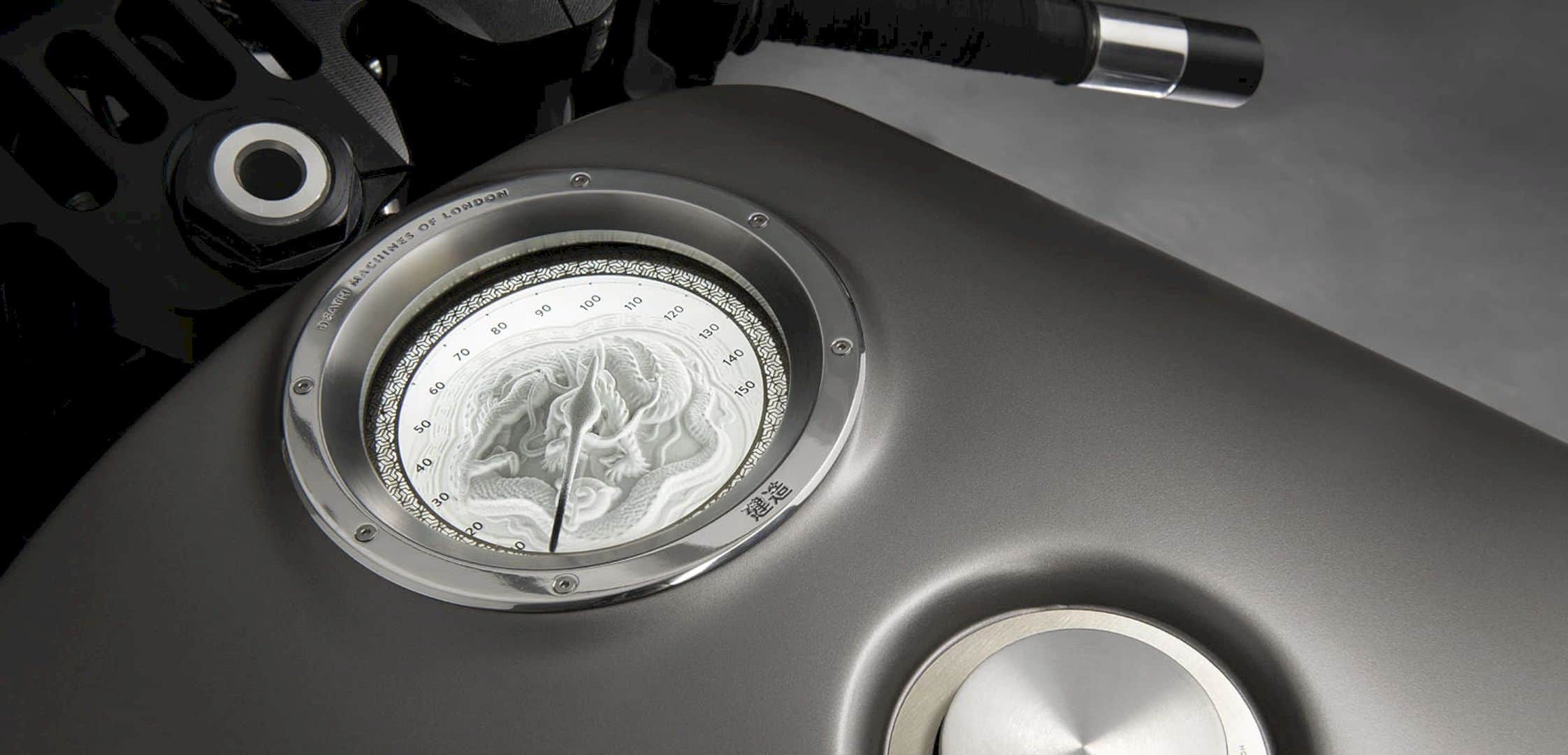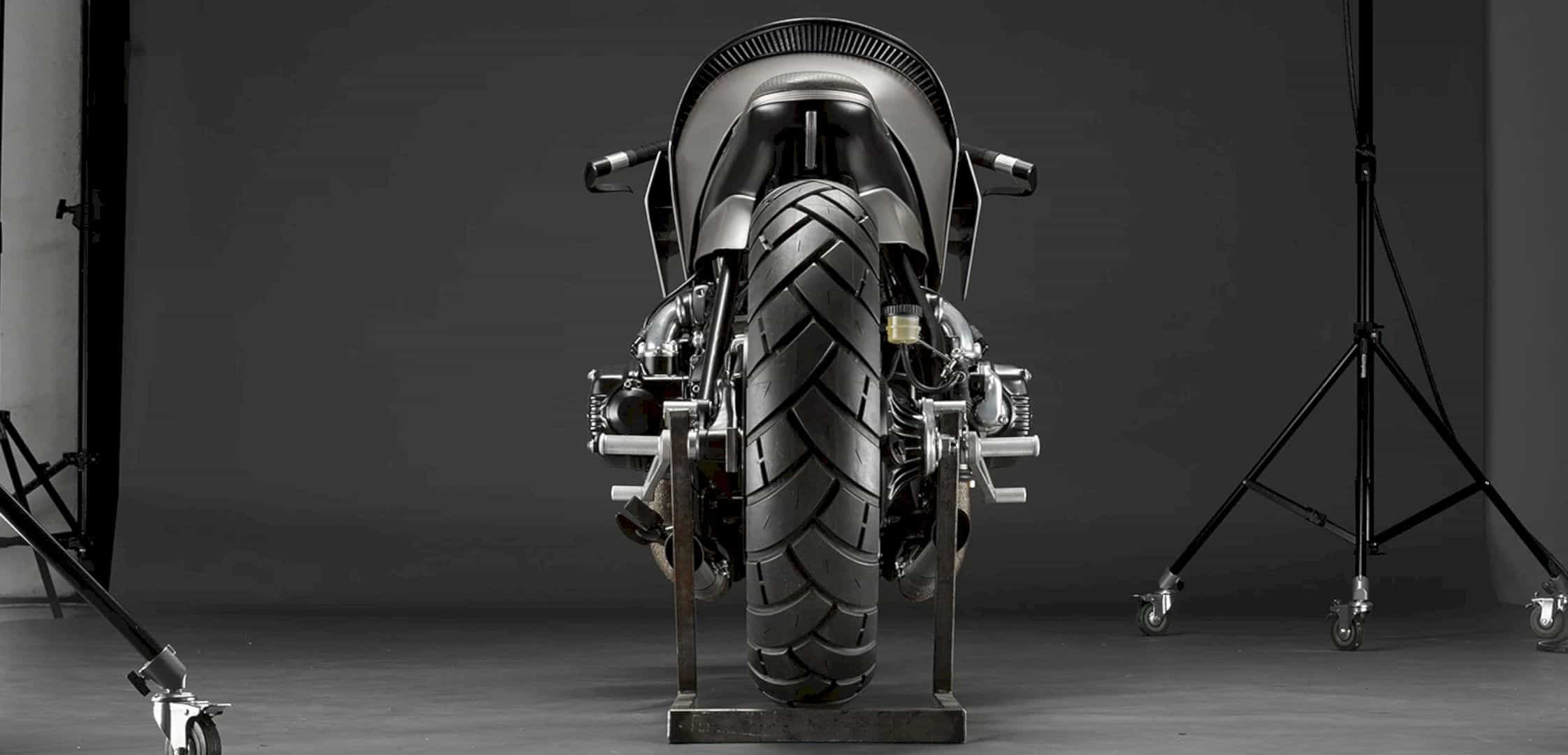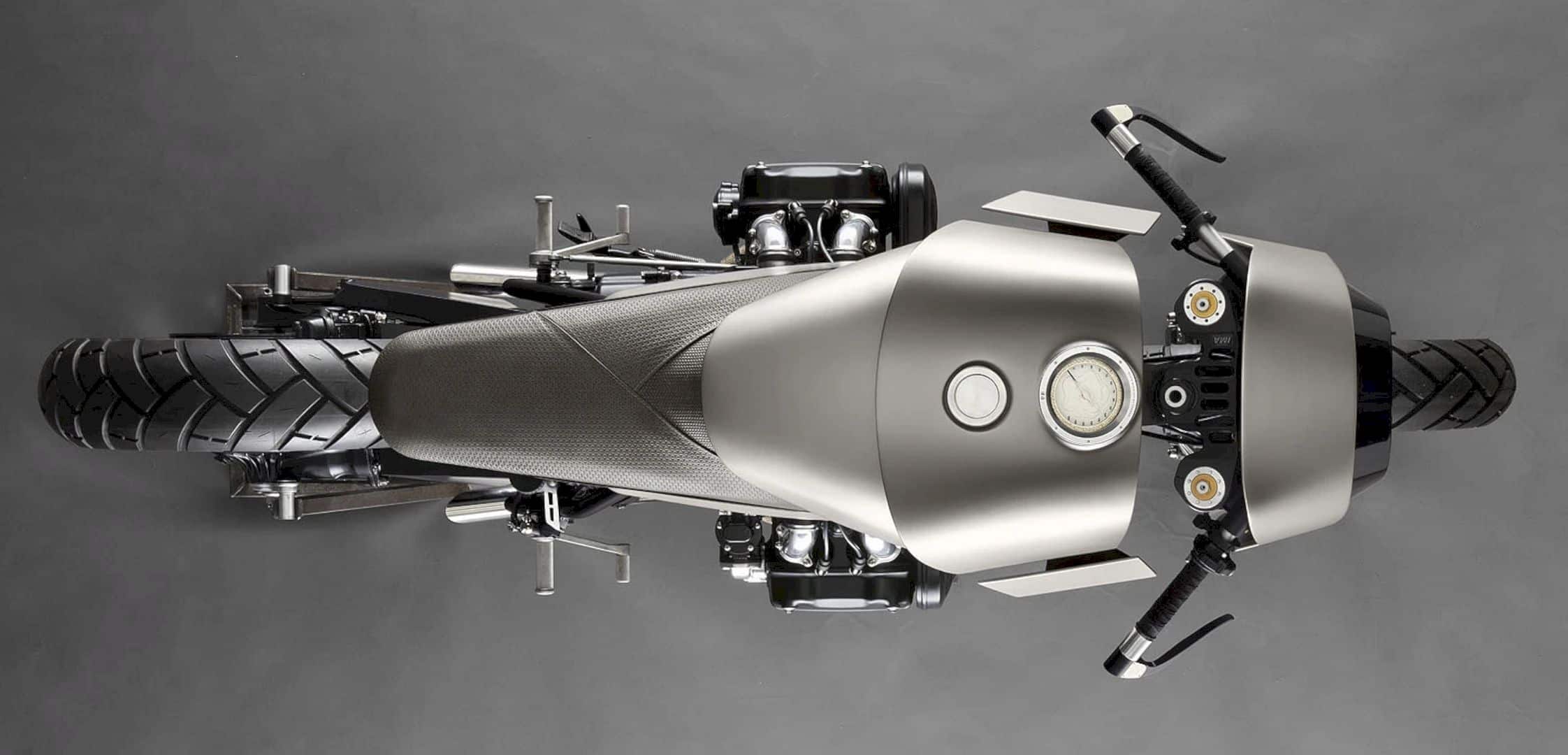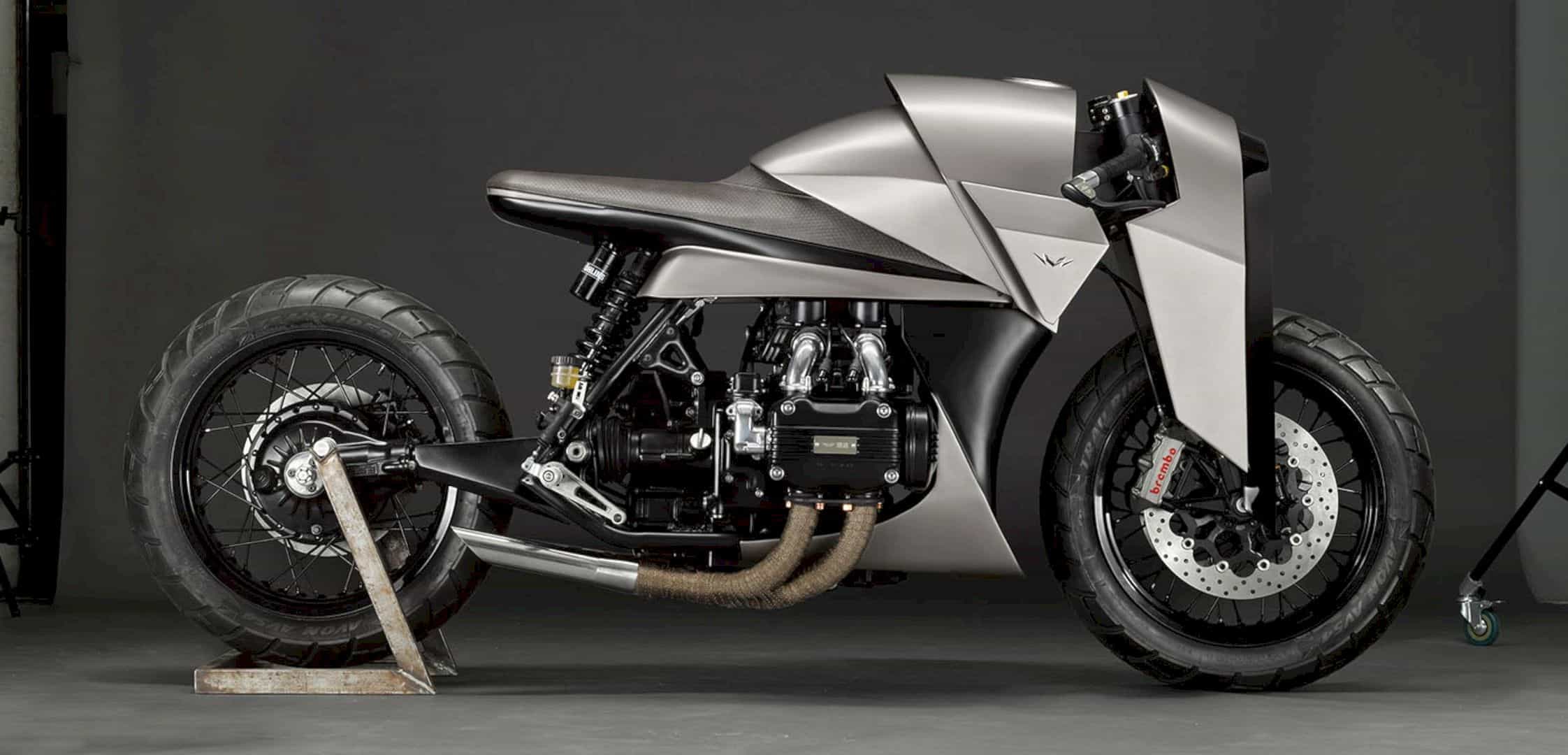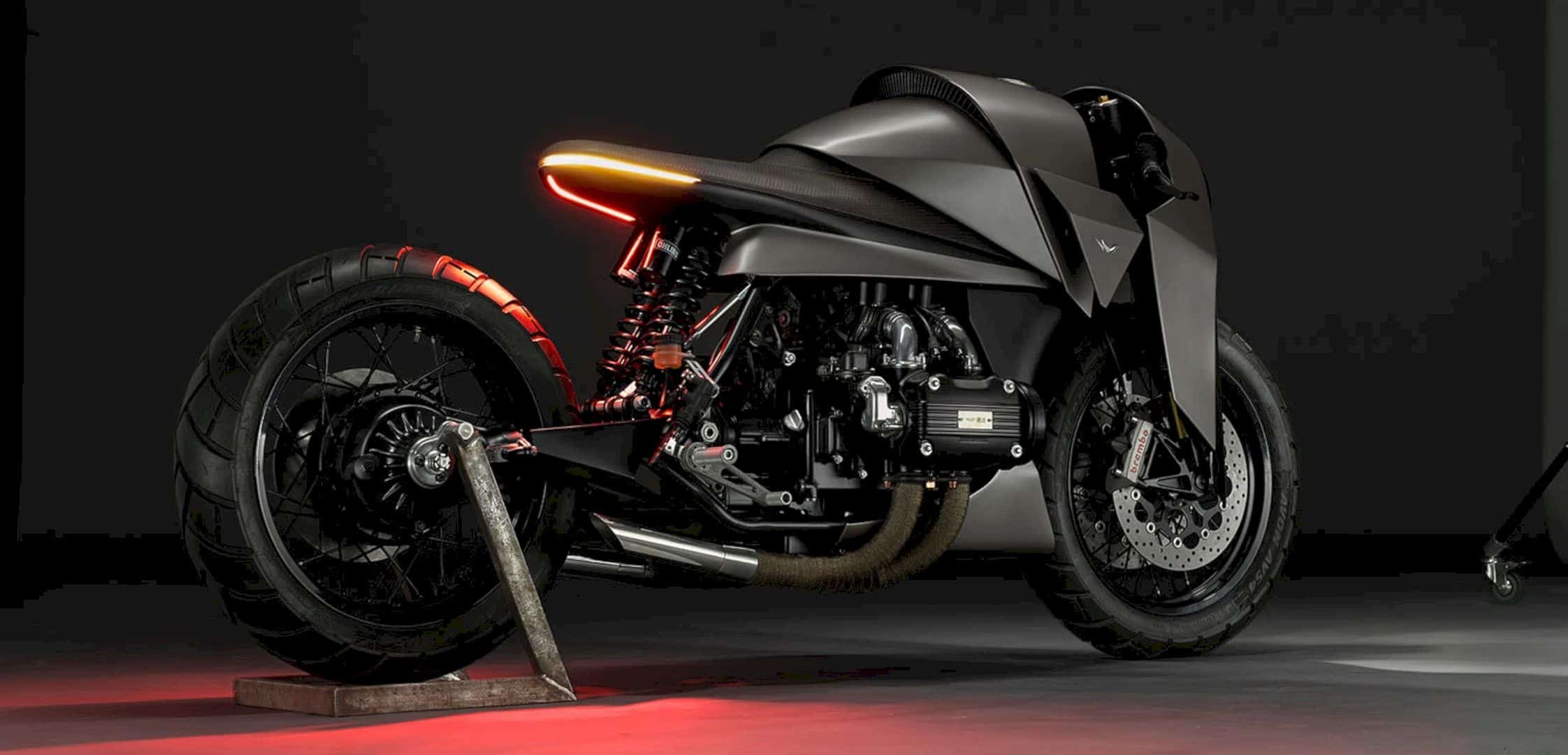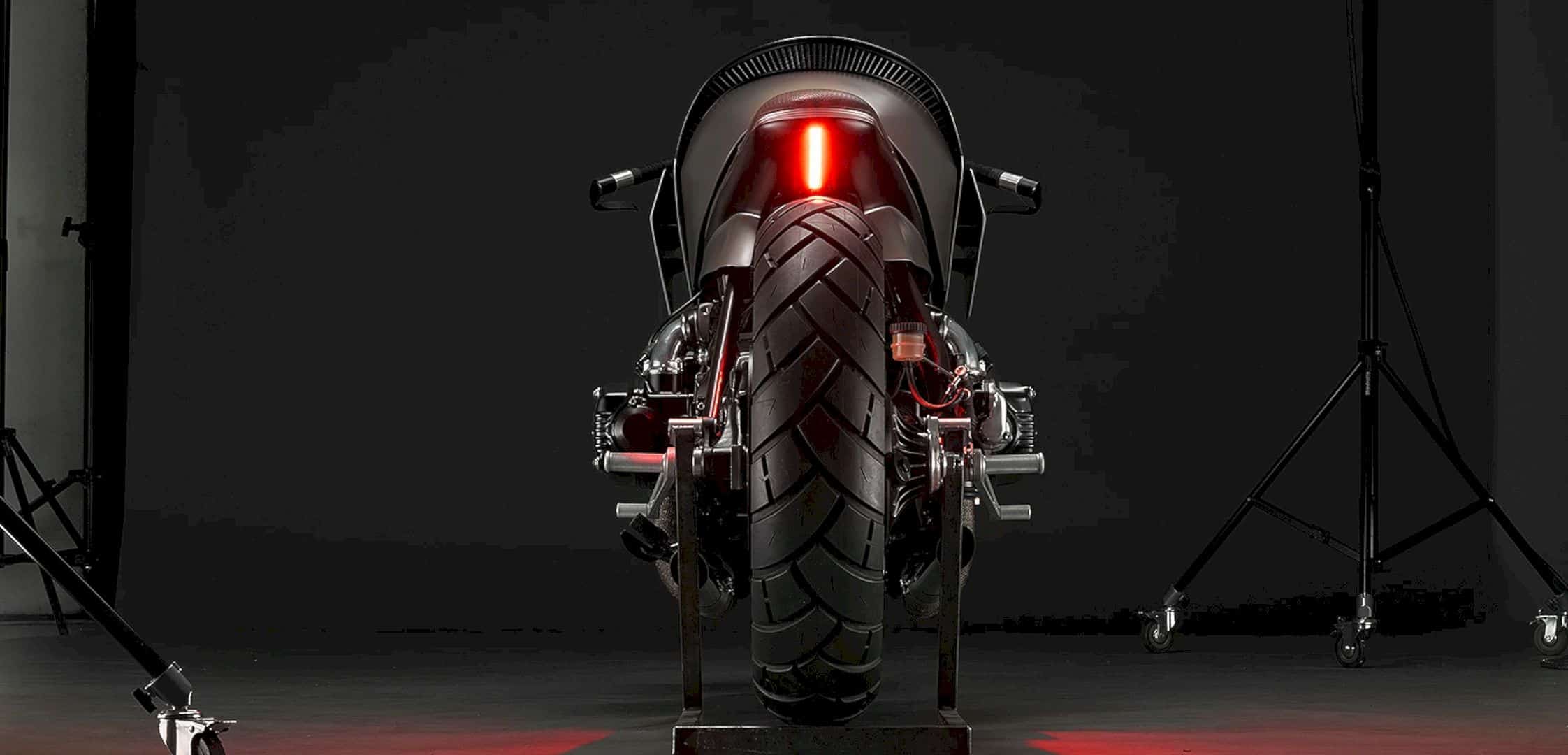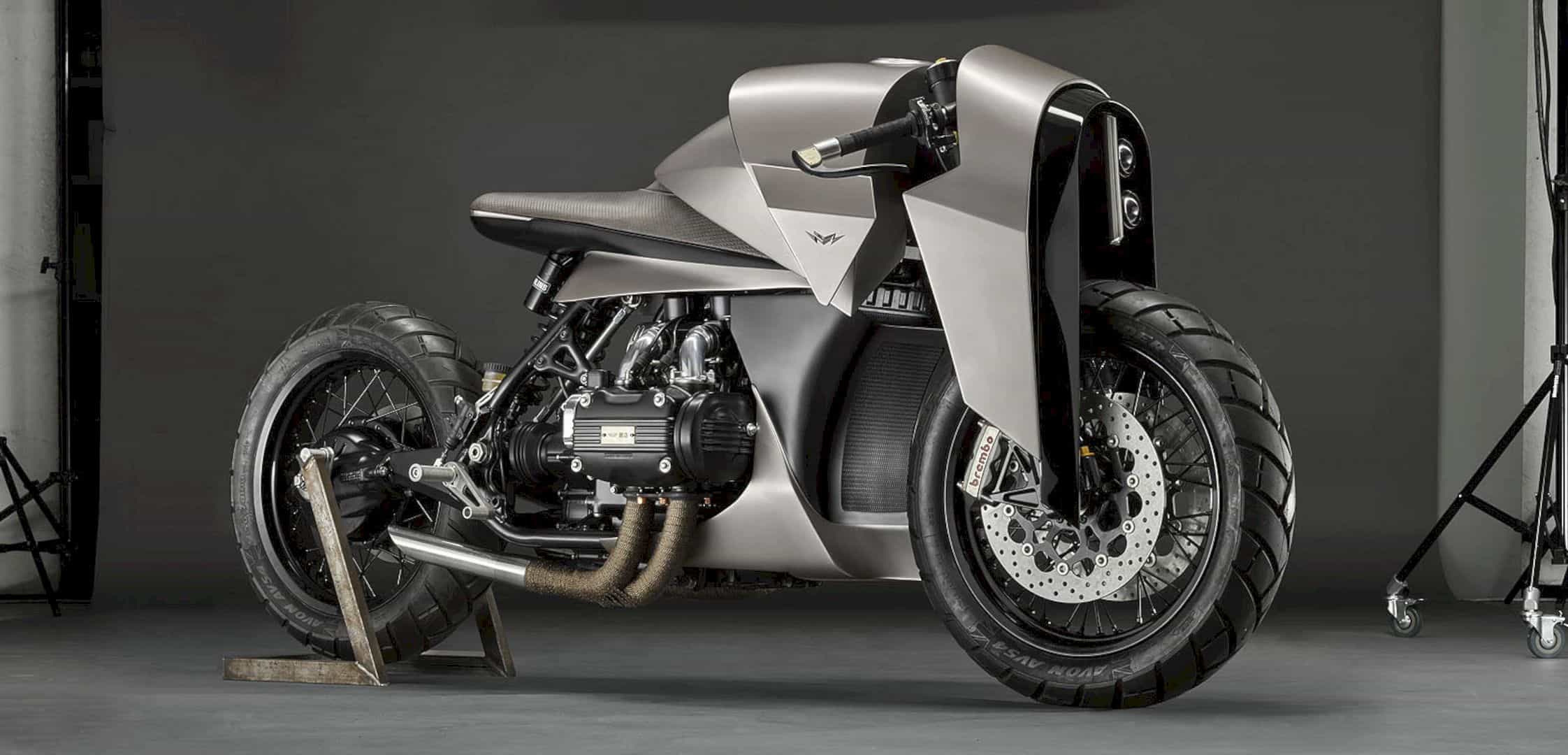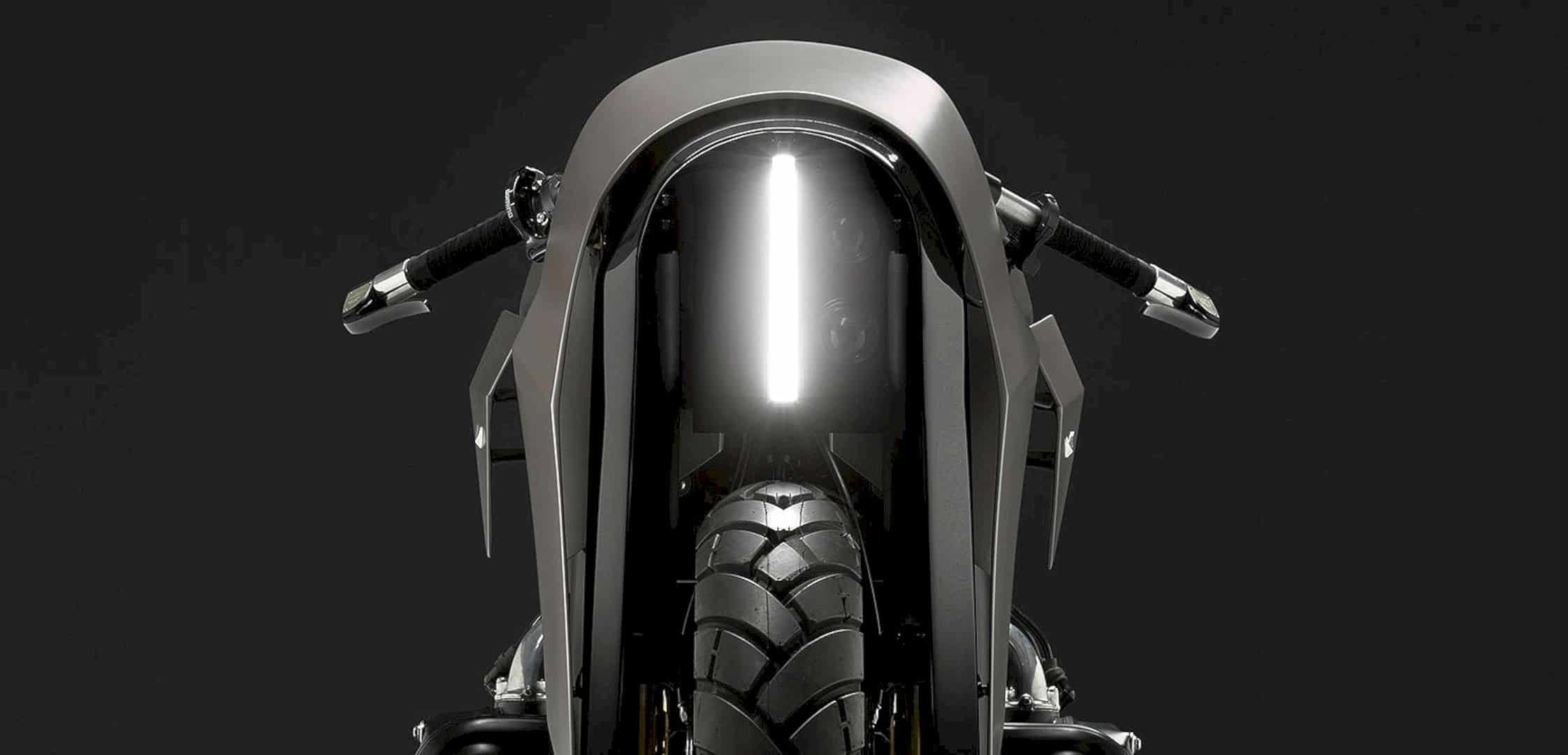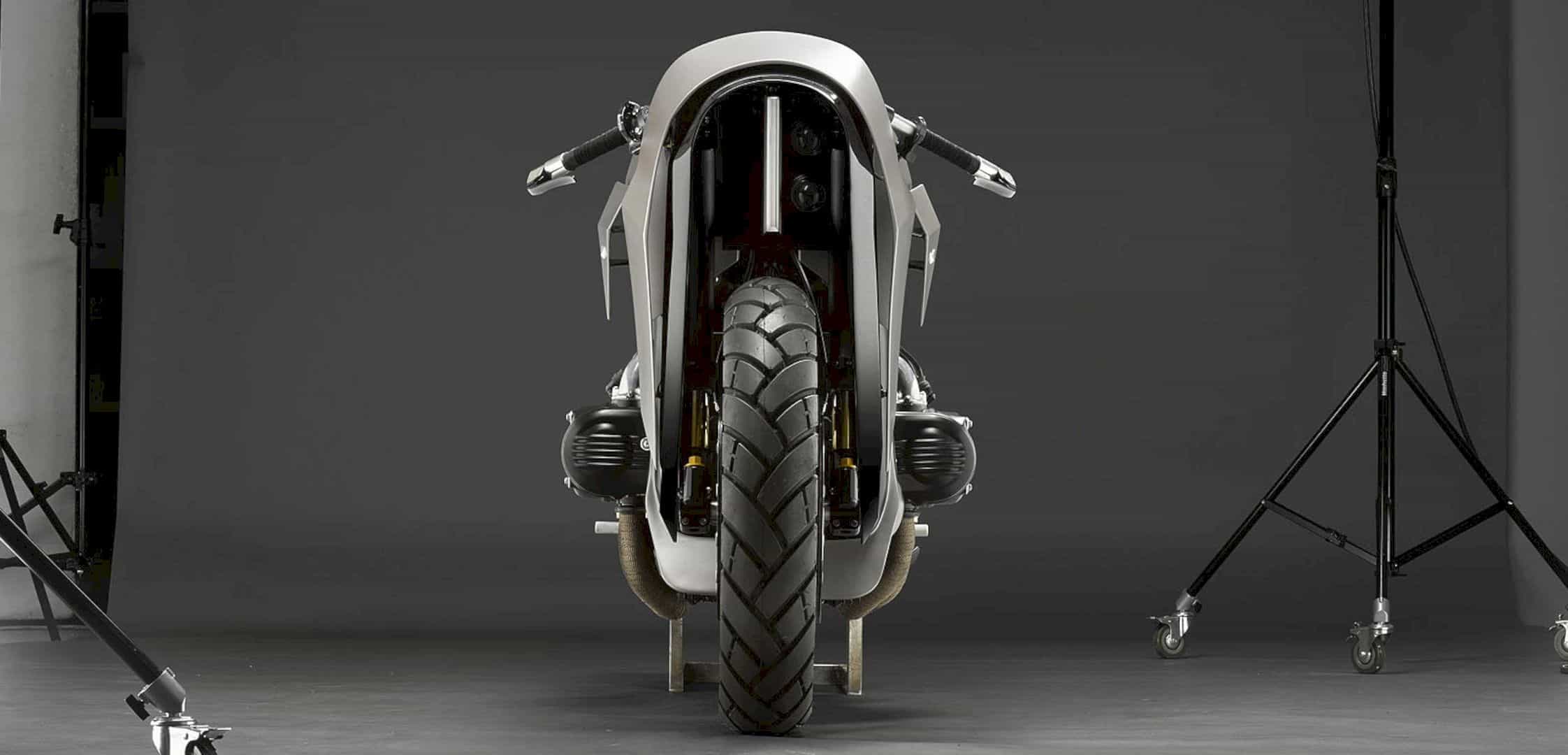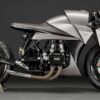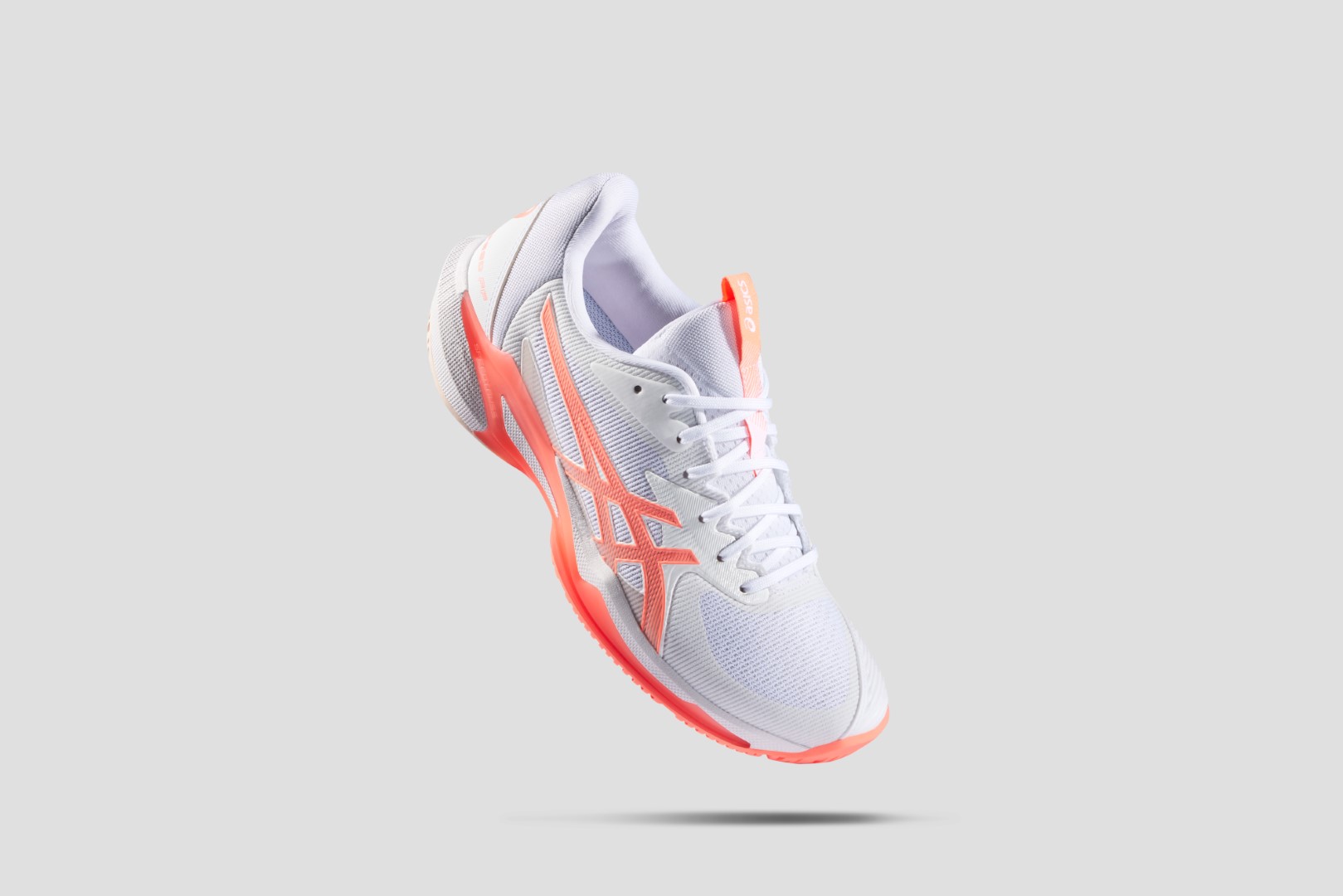Named after a pioneering Japanese isle of man TT racer and inspired by a samurai general armor, Kenzo is the result of traditional craft. It is a reimagined 1977 Honda Gold Wing from Death Machines of London with state-of-art manufacturing techniques and a lot of considerations of life choices.
A lot of manufacturing processes are combined in Kenzo, including the high-precision 3D prints and CNC parts, the slightly more symmetrical composites, the inherent asymmetry of handmade aluminum paneling, and the traditional metalwork with leatherwork, holographic lighting, precision-etching, CNC, and 3D printing.
The body design is inspired by the overlapping segments found in early samurai armor and mixed media panels that have been meticulously finished with smooth curves. The reference to a Mini Katana sword can be found from the mirror-polished black ‘blade’ which drops down to the base of each fork and surrounds the front light cluster.
The Kenzo’s body is finished in custom Titanium Samurai paintwork with matt black detailing. Some additional features also are also included such as handlebars wrapped in the traditional Tsukamaki sword wrapping technique, precision-machined aluminum badges, an in-house petrol cap, and detailed ‘Kenzo’ grillwork. While the seat unit reminiscent of the layered clothing worn under armor with the high-density foam and embossed leather wrapping.
Death Machines of London works together with Luminit of California to insert the world’s most advanced holographic diffusion film into the units. The frame of Kenzo is finished in satin black with significant modification. For the instrumentation, Kenzo’s hand-crafted speedometer features a hand-made pointer of the same finish and a dragon that cast from an 18th-century Japanese jewel box.
